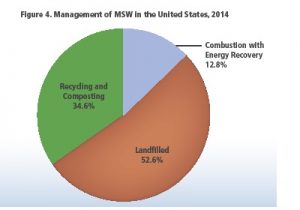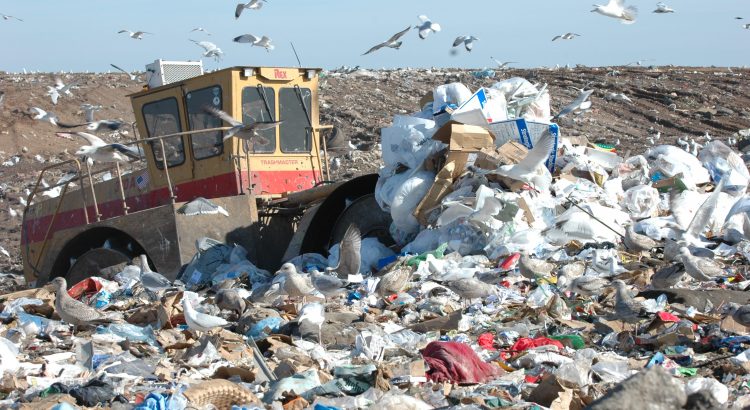EPA landfill statistics 34.6 % recycled composted, 12.8 % energy recovery, 52.6 % landfilled, Total solid waste 258 million tons, Recycling and composting of MSW results in greenhouse gas emissions reduction
Granny says: “Waste not want not.”
From the EPA November 2016.
“U.S. Environmental Protection Agency (EPA) has collected and reported data on the generation and disposition of waste in the United States for more than 30 years. We use this information to measure the success of waste reduction and recycling programs across the country and characterize our national waste stream. These facts and figures are current through calendar year 2014.
In 2014, in the United States, about 258 million tons (U.S. short tons unless specified) of municipal solid waste (MSW) were generated. Over 89 million tons of MSW were recycled and composted, equivalent to a 34.6 percent recycling rate (see Figure 1 and Figure 2). In addition, over 33 million tons of MSW were combusted with energy recovery and 136 million tons were landfilled (see Table 1).
Recycling and composting of MSW results in greenhouse gas (GHG) emissions reduction. In 2014, the 89 million tons of MSW recycled and composted provided an annual reduction of over 181 million metric tons of carbon dioxide equivalent (MMTCO2 E) emissions, comparable to the annual emissions from over 38 million passenger cars.1
As the title for the annual report suggests, EPA is thinking beyond waste. Sustainable Materials Management (SMM) refers to the use and reuse of materials in the most productive and sustainable way across their entire life cycle. SMM conserves resources, reduces waste, slows climate change and minimizes the environmental impacts of the materials we use.”

“Over the last few decades, the generation, recycling, composting, combustion with energy recovery and landfilling of MSW changed substantially. Solid waste generation per person per day peaked in 2000. The 4.4 pounds per person per day in 2014 is about the same as in 2013, and is one of the lowest rates since before 1990. The recycling and composting rate has increased from less than 10 percent of generated MSW in1980 to over 34 percent in 2014. Combustion with energy recovery increased from less than two percent of generation in 1980 to 12.8 percent in 2014. Landfilling of waste decreased from 89 percent in 1980 to under 53 percent in 2014.”
Thinking Beyond Waste
“EPA is helping change the way our society protects the environment and conserves resources for future generations by thinking beyond recycling, composting, combustion with energy recovery and landfilling. Building on the familiar concept of Reduce, Reuse, Recycle, the Agency is employing a systemic approach that seeks to reduce materials use and associated environmental impacts over their entire life cycle, called sustainable materials management (SMM). This process starts with extraction of natural resources and material processing through product design and manufacturing, then the product use stage, followed by collection/ processing and final end of life. By examining how materials are used throughout their life cycle, an SMM approach seeks to use materials in the most productive way with an emphasis on using fewer materials and products, reducing toxic chemicals and environmental impacts throughout the material’s life cycle and assuring we have sufficient resources to meet today’s needs and those of the future. Data on MSW generation, recycling, composting, combustion with energy recovery and landfilling is an important starting point for the full SMM approach.”
https://www.epa.gov/sites/production/files/2016-11/documents/2014_smmfactsheet_508.pdf




